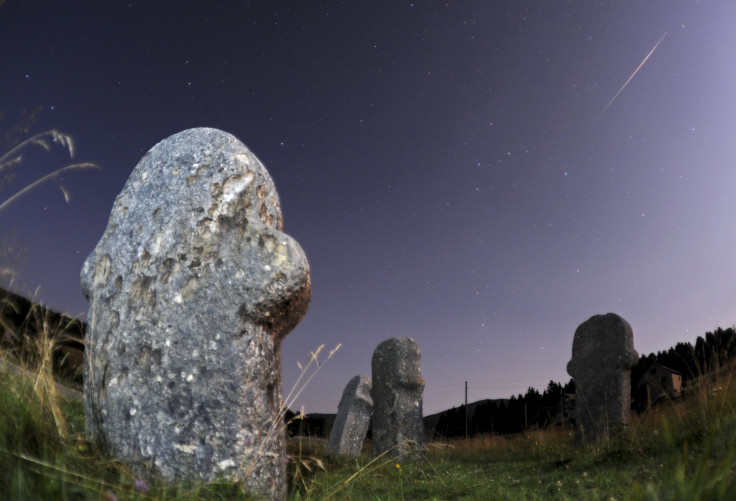Perseid Meteor Shower 2014 In Photos: The Perseids Fight Through Clouds, Rain And A Bright Moon

The much-anticipated peak of the Perseid meteor shower took place on Tuesday, but August's prime astronomy event had to overcome poor weather conditions (for stargazers in the eastern U.S.) and a bright moon. For many, viewing the Perseids was next to impossible, but other viewers had better luck and witnessed the famed fireballs.
Here's what a shooting star looks like from the side! #BlueDot pic.twitter.com/AtkD2vHa6Z
— Alexander Gerst (@Astro_Alex) August 11, 2014Each August, the Earth passes through a debris trail left behind by Comet Swift-Tuttle as the comet makes its way around the sun. The Perseids have become an annual astronomical event, as the meteor shower becomes active in late July and peaks around Aug. 12 and Aug. 13. Previous years have had ideal conditions, no clouds or a crescent moon, which led to more meteors seen by observers.
Composite image of several meteors: https://t.co/YLfG3umEJZ
— NASA Marshall News (@NASA_Marshall) August 13, 2014In 2014, the Perseids had to compete with a bright, waning moon (the "supermoon" was on Sunday) and on Tuesday rain and clouds, especially for the East Coast of the United States, reduced visibility. Luckily, Tuesday's washout does not mean the end of the Perseid meteor shower. Due to the wide debris trail, the Perseids will be active until Aug. 22, although the rate is dramatically lower than the number of meteors seen during the Perseids' peak.
Caught two Perseid meteors 15 sec apart at 2:47am over my house in Noblesville @indystar pic.twitter.com/ZnLbKezxFW
— Eric Teske (@EricTeske) August 13, 2014Spending some time over the weekend to view the Perseids will yield good results, and there are some events scheduled around major U.S. cities on Friday and Saturday. Viewing the Perseids is easy enough; find a dark place away from ambient light, close to midnight, and look northeast toward the constellation of Perseus.
Slooh, the international organization of astronomers and observatories, broadcast coverage of the Perseids from the Canary Islands, and the event can be viewed below.
© Copyright IBTimes 2025. All rights reserved.






















